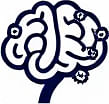Lateral Thinking: Unlocking Creative Solutions
 by Shanie Goodwin
by Shanie Goodwin
Lateral thinking offers a fresh approach to problem-solving by encouraging unconventional ideas. This method, pioneered by Edward de Bono, helps in business, psychology, and personal growth, fostering innovation and cognitive flexibility in everyday challenges.
Lateral thinking represents a shift from conventional methods, allowing individuals to approach problems from new angles. This concept, introduced by Edward de Bono, emphasizes generating ideas that break free from standard patterns.
In its core, lateral thinking involves looking beyond the obvious. For instance, instead of following a straight path, it promotes exploring indirect routes to find solutions. lateral thinking can transform how we tackle daily issues, making it a valuable tool for professionals seeking fresh perspectives.
To illustrate, consider a business scenario where a company faces declining sales. Traditional approaches might focus on advertising more, but creative problem solving suggests reimagining the product entirely, perhaps by repurposing it for a different market. This method encourages stepping outside comfort zones, leading to unexpected breakthroughs.
One way to practice lateral thinking is through techniques like random stimulation. This involves introducing unrelated elements into a problem. For example, if you're designing a new app, you might draw inspiration from something unrelated, such as nature's patterns. Such exercises build cognitive flexibility, which is essential in fields like psychology.
In psychology, this approach aids in cognitive development by challenging rigid thought processes. It helps individuals overcome mental blocks, promoting adaptability. Studies show that engaging in these exercises can enhance brain function, particularly in areas related to innovation.
For business strategies, lateral thinking plays a key role in fostering creativity. Leaders often use it to generate novel ideas during brainstorming sessions. A team might, for example, flip a problem on its head—turning a weakness into a strength. This not only sparks originality but also drives competitive advantages.
Practical Applications
Applying lateral thinking in daily life starts with simple habits. Begin by questioning assumptions in any situation. If you're stuck on a project, list outlandish ideas without judgment. Over time, this builds a mindset geared toward exploration.
In education, teachers incorporate lateral thinking to encourage students to think independently. Activities like puzzles or role-playing scenarios help develop these skills early, supporting long-term growth.
Real-world examples abound. Consider how some inventors solved problems creatively. The creation of the Post-it Note came from an adhesive that wasn't strong enough for its original intent, but it found new purpose through innovative rethinking.
Benefits for Lifelong Learners
For those pursuing personal development, lateral thinking offers profound advantages. It cultivates resilience by teaching people to view failures as opportunities. In cognitive terms, regular practice strengthens neural connections, enhancing overall mental agility.
Professionals in various fields benefit too. In marketing, for instance, it leads to unique campaigns that capture attention. By combining unrelated concepts, teams can craft messages that resonate deeply with audiences.
To get started, try daily challenges. Pick a common object and brainstorm unconventional uses for it. This exercise, repeated over time, hones the ability to think laterally.
Potential Challenges and Overcoming Them
While effective, lateral thinking isn't always straightforward. Some may find it difficult to let go of linear habits. The key is persistence—start with guided sessions and gradually apply it independently.
In team settings, encourage open dialogue to avoid dismissing ideas prematurely. This ensures that even wild suggestions get fair consideration, leading to richer outcomes.
Ultimately, integrating lateral thinking into routines can yield lasting results. It empowers curious minds to innovate continuously, whether in personal endeavors or professional pursuits.
By embracing this approach, individuals from all walks of life can enhance their problem-solving toolkit, making it an indispensable asset for growth and discovery.
